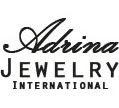The 19th century Industrial
Revolution helped create a jewelry
platform available to everyone. The middle class people could purchase fine pieces of jewelry. Since imitation stones began flooding the market, working classes could afford to buy a piece of jewelry.
Besides, the growing population and the
publication from media enhanced a rapid growth of demand of luxury goods.
People became very much aware how they dressed
and behaved, in order to
differentiate their identity from the others in the widening social basis.
Portraits from 1840's onward reflect that many women preferred fussiness, jewelry with mitten and shawls were discordantly pooled
together.
Art Nouveau objects carved with a
female face surrounded by long and flowing hair, particularly in jewelry, were
popular. 'Art Nouveau” is French which means “new art”. It is the most popular
international philosophy and style of art during 1890-1905, representing the
spirit of sexual freedom mostly adopted by the most avant-garde group. The innovative
style gave a kick start to America's burgeoning costume jewelry industry, which
was characterized by organic images, such as floral and plant motifs, as well
as very stylized flowing curves and twisting shapes. The free-flowing
naturalistic curves gave women an impression of sleek and sophisticated
softness that chimed with their aspirations for emancipation. Later on, due to
the mass production techniques invented, inexpensive trinkets and ornaments,
jewels, stamped from beautifully designed sheets of silver or gilt metal,
became more affordable to even lowest-paid group. The finest pieces
incorporated this kind of artistic motifs of natural forms and androgynous face
or head into gilt metal.
Precursory idea of using horn, which
was specially carved with coating technique in jewelry, by Lucien Gailland, was
widely copied by two French designers, Elisabeth Bonte and Georges Pierre, on
mid-priced plastic-made horn pendants and brooches. The goods could be plain or
in the shape of butterfly or insect, which are still collectible today.
People preferred the ornate parures,
matching sets of jewelry, and aigrettes for the hair in formal occasions by the Victorian era. Chaumet and Boucheron which are still familiar to us today, are
the founding fathers of jewelry dynasties, who gained their reputation in
producing parures. A tiara with ostrich plumes and jeweled comb were used to
keep tall coiffures in place. Bracelets were designed boldly, often with
portrait miniatures at centres. The proliferated evening gowns provided the
perfect backdrop for elaborate necklaces.
Even though
more mechanized and industrialized techniques were developed, artisans remained true to their craft. The technical expertise in
jewelry production did not waver. Technicians and goldsmiths drew upon all the
stylistic traditions that had walked across the historical stage. A particular group of
jewelry designer produced one-off pieces with superb workmanship in this period
of time. Julias Meier Grace, Paul Follot and Maurice Dufrene, are the pioneers
of Art Nouveau & jewelry made by them is now out of reach of all. They were
too expensive to be thought of as costume jewelry, but the very wealthy
collectors mostly have the valuable pieces in their private collections or on
display in public museums.
Meanwhile, due to the growing
reputation of the actress Sarah Bernhardt (1844-1923), her image for setting
free of sexuality rather than hiding off under tight corsets successfully
attracted leading jewelers produced theatrical accessories made of metal and
paste with enamel.
Commercial
enterprises were formed to openly market the sale of jewelry. The firms of
Faberge, Cartier, Tiffany and other great jewelry companies have their
beginnings and roots in the Industrial Revolution. The Art Nouveau and abstract
ideas such as Cubism with great artists like Salvador Dali and Pablo Picasso
contributing to the trade.
Louis Comfort Tiffany (the founder's
son of Tiffany & Co.) has great impact on jewel history. Young designers
imitates Tiffany's idea, by combining precious and non-precious materials in
Art Nouveau designs. Firms later produced and sold cheaper imitations of the
top handcrafted jewels. Another American firm, Gorham Corporation, was
producing large quantities of hollow-backed jewels stamped with imitation
'repousse' work, most of it based on French Art Nouveau designs.
With the Celtic revival launched by
Liberty in Britain, great numbers of silver jewels like pendants, brooches and
hat pins were made on simplified Liberty designs, and mostly given a touch of
peacock blue enamel, which is a characteristic Art Nouveau shade. Most
shimmered with swirling Art Nouveau forms, although a number sported the winged
scarab.
Rene Lalique (1860-1945), a leading
French designer and maker of jewelry and glassware created bracelets,
necklaces, pendants, combs and pectorals combined with the use of gold with
gemstones and enamel depicted with nude or draped human female figure, and
fantasized with butterfly or dragonfly wings, which emphasized the theme of
nature by means of peacocks, snakes, insects, blossoming branches and orchids.
Large hats, fashionable at the end
of the 19th century, were secured by long steel pins with decorative
gold, silver, or gilded metal, often set with quartz or paste by English. One of the famous mechanized
factory, specialized in production of thimbles and hat pins marked 'CH' (1890-
1910).







1 comments:
If you're trying to lose fat then you certainly need to start using this totally brand new tailor-made keto meal plan.
To create this service, licensed nutritionists, personal trainers, and professional chefs joined together to develop keto meal plans that are effective, suitable, price-efficient, and delightful.
Since their first launch in January 2019, hundreds of individuals have already transformed their figure and health with the benefits a proper keto meal plan can give.
Speaking of benefits; in this link, you'll discover eight scientifically-tested ones provided by the keto meal plan.
Post a Comment